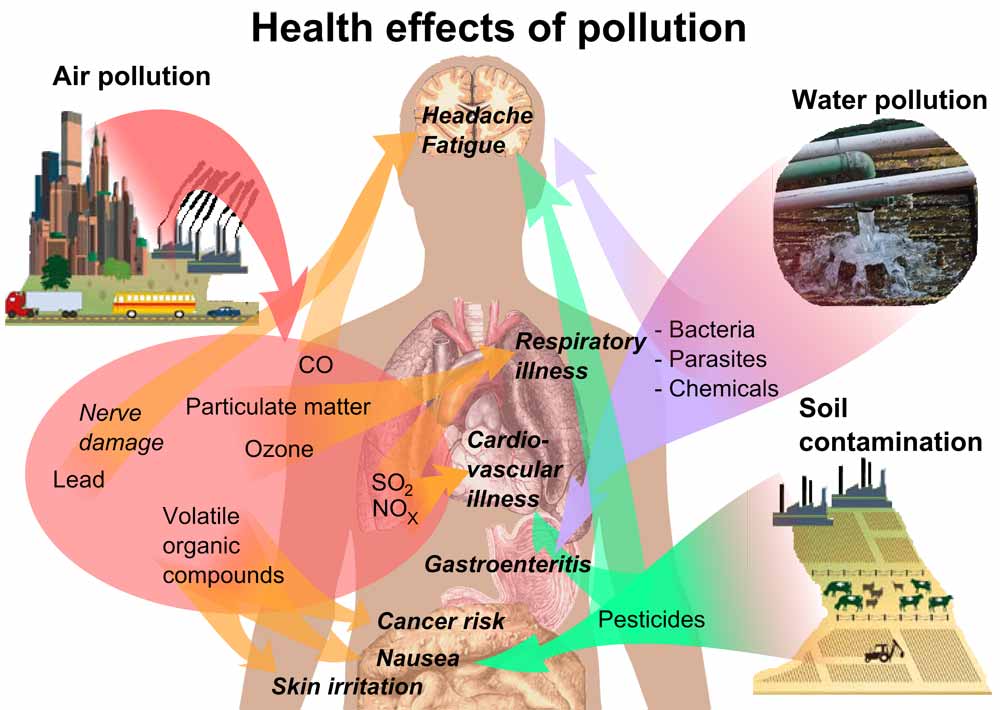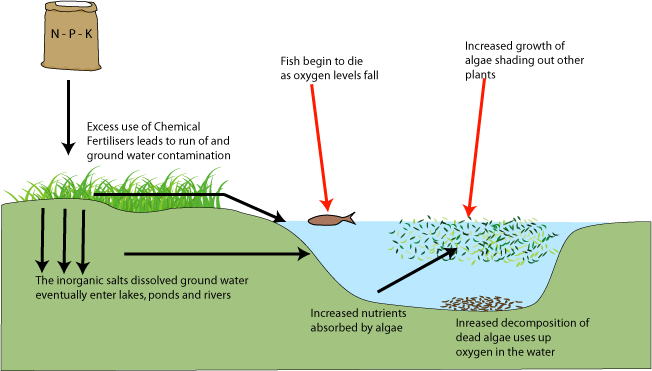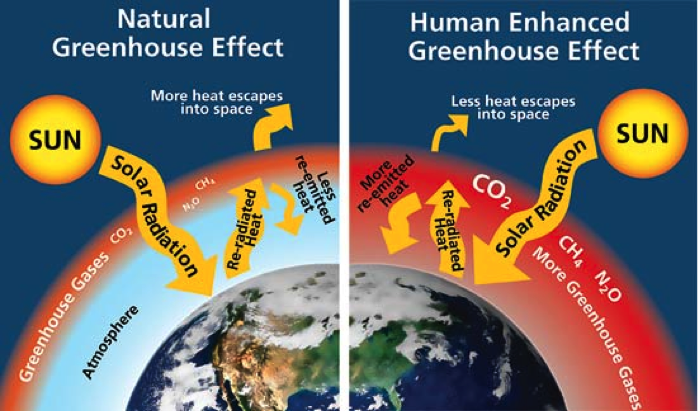
Air pollution is the world’s largest killer and responsible for thousands of deaths worldwide every year. Carbon monoxide, sulfur dioxide, nitrogen oxides, ozone, particulate matter, lead and PM 2.5 are the major contributors to indoor air pollution. Air pollution is the result of combustion from space heating, industrial and vehicular emission, which causes and exacerbates several diseases such as asthma cancer, pulmonary illnesses, and heart disease. Not only these, but there are also different effects of air pollution on human health and these may be:
- Irritation of the eyes, nose, and throat
- Wheezing, coughing and problem in breathing
- Worsening of lungs and heart problems
- Increased risk of heart attack
Long-term exposure to air pollution also affects the reproductive, neurological, and respiratory systems. In some major cases, it can even cause death.
Table of Contents
Heath Effects of Air Pollution on Human

Air pollution is a major for people who are sensitive to common air pollutants such as ground-level ozone and pollutants. Air pollution has an adverse effect on children, people with heart diseases and asthma patients. Generally, if you are young and in a good state of health, exposure to moderate air pollution levels will not lead to any serious short-term effects. However, long term exposure to air pollution can lead to some serious effects on human health.
The most common pollutants found in the environment includes:
- Nitrogen dioxide, sulphur dioxide, ozone, carbon monoxide and particles– Irritates the airway of the lungs.
- Carbon monoxide – Prevents the uptake of oxygen by the blood which leads to the reduction of oxygen supplied to the heart.
- Particles – Particles can be carried deep into the lungs which can cause inflammation and worsening of heart and lung diseases.
Also Read: How Air Pollution Affects Your Skin
Effects of Air Pollution on Environment
Air pollution not only harms human health but also causes environmental effects. It can directly contaminate the surface of water bodies, soil and even kill crops or reduce their yield. There are other impacts of air pollution on the environment and these are mentioned below.
Acid Rain

Acid rain contains a harmful amount of sulphuric and nitric acids, which are formed when sulphur oxides and nitrogen oxides released into the atmosphere while fossil fuels are burned. As per Environmental Protection Agency of the United States, these acids fall either in wet form (rain, snow, or fog) or dry form (Gas and particulates), thereby affecting the environment. Acid rain kills trees and harms animals, fish, and other wildlife and makes soil unfit for habitat.
Eutrophication

A high concentration of nitrogen and phosphorous from different sources such as fertilizer run-off lead to eutrophication. Air emissions of nitrogen oxides from vehicles, power plants also contribute to the nitrogen entering aquatic ecosystems.
Haze

The presence of smoke, dust and different types of airborne particles cause haze. Some particles are directly emitted to the atmosphere by sources such as power plants, industrial facilities, vehicles, and construction activities. Exposure to smog causes eye, nose and throat irritation and breathing problems.
Effects on wildlife
Like humans, animals also experience health problems if they are exposed to concentrations of air toxins over time. Air toxins result in birth defects, reproductive problems, and disease in animals.
Ozone depletion

Ozone is a gas that is both present on the ground level and Earth’s upper atmosphere known as the stratosphere. At ground level, ozone harms human health as a pollutant. However, in the stratosphere, ozone forms a layer, which protects everyone on earth from the harmful ultra-violet rays. Thinning of the ozone layer causes more UV rays to reach earth. This will lead to serious diseases like skin cancer, and cataract.
Global climate change

Earth’s atmosphere contains a specific balance of naturally occurring gases that trap the sun’s heat near the Earth’s surface. This “greenhouse effect” keeps Earth’s temperature stable. Humans have disturbed this balance by producing more greenhouse gases, including carbon dioxide and methane. As a result, Earth’s atmosphere is trapping more of sun’s heat causing the temperature to rise.
How Outdoor Air Pollution Impact Indoor Air Quality and Health?
Not just outdoor but indoor air pollution is harmful to health. Outdoor air pollution is responsible for deteriorating the indoor air quality, making it typically 2-5 times worse than you have expected. Outdoor air pollutant enters your home through door & windows, cracks in walls, thereby making the indoor air more toxic. Breathing impure air leads to a number of respiratory diseases such as lung cancer, chronic obstructive pulmonary disease, and asthma.
How to minimize the exposure of Indoor Air Pollution?
In addition to outdoor pollution, it is equally essential to keep yourself safe from indoor air pollution. Ventilate your home wisely, which will help regularly disperse the indoor air pollutants. As tobacco contains more than 4,000 chemicals including 60 carcinogens, it is important that you never smoke indoors. Install high-performance HEPA air purifier that can effectively remove 99.97% of particles present in the air and make the indoor air healthy and pollution free.
The Bottom Line
Long-exposure to air pollution affects the environment. Considering the adverse effect of air pollution, it is necessary to take some steps to reduce its effects. The excessive level of outdoor pollution also has an effect on the indoor air quality exposing you to constant danger.





I agree with the insightful knowledge provided by author in a critical subject Air Pollution. It is imperative to both understand as well as embrace ourselves with the challenges and consequences posed by Air Pollution as this menace is not only affecting our present generations but will also impact our future generations. The climate deal signed in Paris is a welcome step in tackling Air Pollution. Besides, we also need to take conscious efforts on our own like not burning fire crackers, relying more on public transportation system rather than our personal vehicles, spreading enlightenment on cause and effects of air pollution like our insightful author has done in this article.